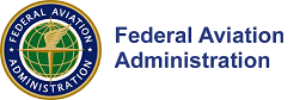The Federal Aviation Administration is working on new technology that can detect and identify drones and drone pilots who fly near airports, according to a contract obtained by Motherboard using the Freedom of Information Act.
The contract, between the FAA and CACI International, notes that the tech will allow the FAA to “identify rogue unmanned aircraft systems” near airports and suggests that the agency believes some of its drone education outreach efforts are not working.
Specific details of the program were redacted from the contract without an official exemption listed by the FAA FOIA office. Motherboard has appealed this decision. The existence of the program, called “Pathfinder,” was announced by FAA Deputy Administrator during a hearing before the House Aviation Subcommittee in October.
In a press release, CACI CEO John Mengucci noted that the agreement “provides a proven way to passively detect, identify, and track UAS–or aerial drones–and their ground-based operators, in order to protect airspace from inadvertent or unlawful misuse of drones near U.S. airports. This CACI-built solution will help ensure a safe, shared airspace while supporting responsible UAS users’ right to operate their aircraft.”

The FAA redacted large portions of the contract without an explanation.
Since that announcement, few details of what the project is or how it works have been made public. The contract obtained by Motherboard, embedded below, titled “Cooperative Research and Development Agreement,” reveals more about the impetus behind the program—namely that the FAA believes its many drone education outreach efforts aren’t making the skies safe for manned aircraft.
“Data shows that current training, outreach, and educational campaigns are not sufficient deterrents to UAS interference at airports and other critical airspace,” the FAA wrote in the contract.
What to do about drones that fly near airports or at high altitudes has been quite the conundrum for the FAA, which recently mandated that all hobby drone pilots register themselves with the agency. As part of the registration process, you must promise to “not fly near aircraft, especially near airports.” The FAA has also started the “Know Before You Fly” drone education campaign to discourage people from flying unsafely.
The bulk of the contract is fairly standard and is a modified version of a basic contract of this type posted online by the FAA.
“The purpose of this Cooperative Research and Development Agreement is to serve as a mechanism to safely explore procedures and processes in and around the FAA’s airport environment to identify rogue unmanned aircraft systems consisting of the unmanned aircraft and pilot in command,” the contract says.
Under the terms of the two-year contract, which will last until October 6, 2017, the FAA will not pay CACI but will allow it to test its technology at airports and the FAA will provide technical details and support that might help the company.
“The FAA may provide engineers, scientists, or any other form of professional or clerical personnel; facilities and equipment (especially facilities that cannot be found in private industry and are necessary to the testing and development of aviation technology); intellectual property; or any other resources, with or without reimbursement. The FAA may provide anything but money to the collaborating partner,” according to an FAA presentation about these types of contracts.
“CRDAs are sensitive to the needs of business organizations to protect commercially valuable information,” the presentation continued. ”Trade secrets or confidential information supplied by a partner shall not be disclosed. Trade secrets or privileged information that develops during the course of a CRDA can be protected from disclosure for up to five years.”
In a cover letter sent to me with the request, the FAA noted that it withheld seven pages of the contract that contain “commercial or financial information that was voluntarily submitted to the government,” an exempt class of information from FOIA requests. However, details on one page of the document were redacted (seemingly with a marker, which is unusual) without any exemption being cited. Motherboard has appealed this particular redaction and asked for more information about where the program will be deployed and how it will work—information that I requested in my original request but was not provided.
Source: Motherboard

